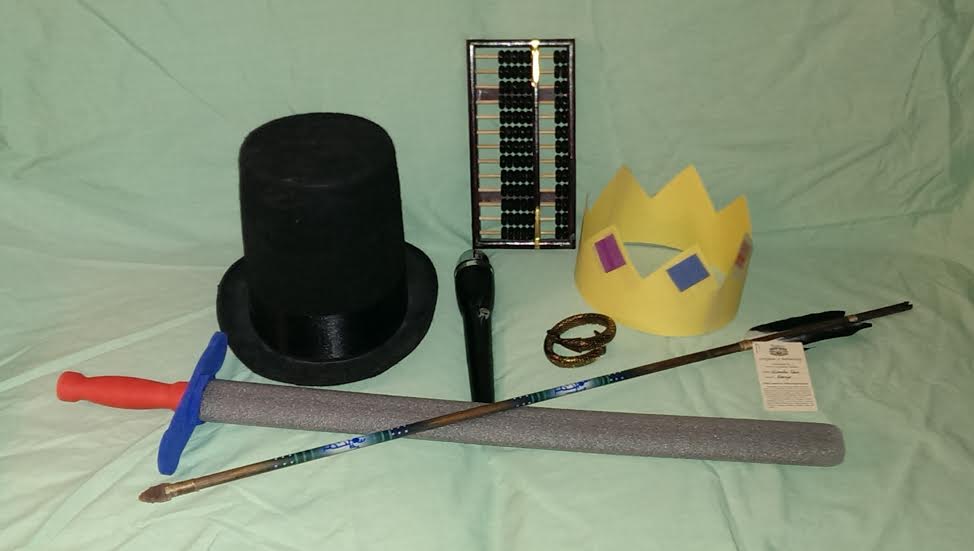Guessing Games
Some of these games closely resemble the classic guessing game Twenty Questions. They're good for kids and can also be good games for car trips.
Yes or No

This game works like Twenty Questions, only without the limit on the number of questions. There's a scene in Charles Dickens's A Christmas Carol where a group of people play this game, and the answer turns out to be Scrooge (Mohr 330-331). There are two ways to play it, and I found the rules for both in Victorian Parlor Games by Patrick Beaver, p. 26.
One of the ways to play is for one person to leave the room. While he's gone, the other players think of a word for him to guess. The word has to represent a physical object of some kind. When they've thought of a word, they call the other player back into the room. He can ask them as many questions as he needs in order to figure out what the word is, but all of them have to be yes-or-no questions. (Ex. "Is it big?", "Is it heavy?", "Is it valuable?")
Another way to play is for just one person to think of an object and for all the other players to guess. The other players then take turns asking the person yes-or-no questions until they figure out what it is.
Who Am I?

This game is also similar to Twenty Questions and has two ways to play. I found the rules for both in Victorian Parlor Games by Patrick Beaver, pp. 25-26.
In one version of the game, all of the players take turns pretending to be a famous person. It can be anyone, living or dead, and men can pretend to be women and vice versa to throw off the guessers. Focusing on one person at a time, the other players ask the person yes-or-no questions about the celebrity they are pretending to be. (Ex. "Are you a woman?", "Are you still alive?", "Have you been a politician?", "Are you an actor?", etc.) The players keep asking questions until each celebrity's identity is discovered.
It is also possible to play this game the other way around: Have one person leave the room while the other players think of a famous person for him to be. When the player comes back into the room, he asks them yes-or-no questions to find out who he is supposed to be. (Ex. "Am I still alive?" or "Am I a musician?")
How, Why, When and Where
The rules for this game come from Victorian Parlor Games by Patrick Beaver, pp. 26-27.
One person thinks of a word without telling the other players what it is. The word should represent a physical object of some kind. In this game, the other players are only allowed to ask four questions about the object before they guess what it is. The only four questions they are allowed to ask are:
- "How do you like it?"
- "Why do you like it?"
- "When do you like it?"
- "Where do you like it?"
Example: Suppose that one of the players thinks of a cake. The other players ask him the four questions and his answers are:
- "How do you like it?" -- "With ice cream."
- "Why do you like it?" -- "It tastes good."
- "When do you like it?" -- "On my birthday."
- "Where do you like it?" -- "At a party."
That one is pretty easy and straight-forward. Suppose another player thinks of a piano. The questions and answers could go something like this:
- "How do you like it?" -- "I like it when it's played well."
- "Why do you like it?" -- "I know how to play it, and it's fun."
- "When do you like it?" -- "Pretty much anytime."
- "Where do you like it?" -- "At my house."
Those answers could suggest either a musical instrument or maybe a game of some kind. If the other players know the person who thought of the word well and know that she likes music, they might have a better chance of guessing what she's talking about.
Complicating the Game: Beaver points out that the player who thinks of a word can deliberately try to confuse the other players by picking a word with more than one meaning or a homophone (a word that sounds like other words even though it doesn't mean the same thing and may be spelled differently). The player can then give his answers referring to different possible meanings of the word. His example is the word "mail" which can be mail (as in letters), mail (as in armor), and male (as in man). The examples of answers he gives for this word are:
- "How do you like it?" -- "When it's a good friend." (referring to a "male" as in man)
- "Why do you like it?" -- "Because it sometimes brings good news." (referring to "mail" as in letters)
- "When do you like it?" -- "First thing in the morning." (referring to "mail" as in letters, when the mail arrives)
- "Where do you like it?" -- "In a museum." (referring to "mail" as in armor)
I recommend using this approach only with more experienced players who know that this is an option because players who don't understand what you might be doing could just be really confused and think that you're giving nonsense answers or trying to cheat. I also think that this would probably work better for adults who like word games than with children.
Other Possible Words to Use: Here are a few other words that also have more than one meaning if you'd like to try them:
- Ball -- could refer to a round toy or to a fancy dancing party
- You -- could refer to another person ("you"), a female sheep ("ewe"), or a letter of the alphabet ("U")
- Poker -- could refer to the card game or the fireplace tool
- Diamond -- could refer to the gemstone or the geometric shape (as in baseball diamond)
- Hair -- could refer to "hair" on a person's head or to the long-earred animal ("hare")

